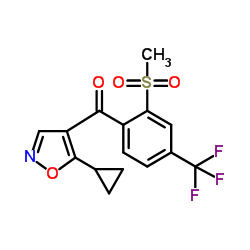Bioavailability of diuron, imazapic and isoxaflutole in soils of contrasting textures.
Miriam H Inoue, Rubem S Oliveira, Jamil Constantin, Diego G Alonso, Cássio A Tormena
文献索引:J. Environ. Sci. Health B 44(8) , 757-63, (2009)
全文:HTML全文
摘要
This research was aimed at understanding the dynamics of the herbicides diuron [3-(3,4-dichlorophenyl)-1,1-dimethylurea], imazapic [2-(4-isopropyl-4-methyl-5-oxo-2-imidazolin-2-yl)-5-methylnicotinic acid] and isoxaflutole [5-cyclopropyl-4-(2-methanesulfonyl-4-trifluoromethyl benzoyl)isoxazole] in two soils of different physico-chemical properties. To accomplish such intent, several greenhouse experiments were run. The bioavailability of diuron (0; 1.6 and 3.2 kg ha(-1)), imazapic (0; 98 and 122.5 g ha(-1)) and isoxaflutole (0; 35 and 70 g ha(-1)) was measured in samples from a sandy loam soil and a clay soil, by sowing a bioindicator (Brachiaria decumbens), at 0, 25, 50, 75 and 100 days after herbicides application (DAA). Diuron was very stable in clay soil, providing control equal to or higher than 92% of bioindicator, up to 100 DAA, as assumed by biomass accumulation. No differential effect was observed in sandy loam soil, even when 2x labeled rate were applied. Imazapic provided a short bioavailability in relation to B. decumbens, independent of rates applied. The persistence of isoxaflutole was longer in clay soil (28 to 30 days).
相关化合物
| 结构式 | 名称/CAS号 | 分子式 | 全部文献 |
|---|---|---|---|
 |
异恶唑草酮
CAS:141112-29-0 |
C15H12F3NO4S |
|
Soil persistence of 4-HPPD-inhibitors in different soil type...
2002-01-01 [Meded. Rijksuniv. Gent. Fak. Landbouwkd. Toegep. Biol. Wet. 67(3) , 383-91, (2002)] |
|
Influence of rainfall distribution on simulations of atrazin...
2007-07-11 [J. Agric. Food Chem. 55(14) , 5399-407, (2007)] |
|
Reaction pathways of the diketonitrile degradate of isoxaflu...
2007-03-07 [J. Agric. Food Chem. 55(5) , 1893-9, (2007)] |
|
The effect of five forage species on transport and transform...
2003-01-01 [J. Environ. Qual. 32(6) , 1992-2000, (2003)] |
|
Temperature and water pressure head effects on the degradati...
2008-12-01 [Environ. Pollut. 156(3) , 678-88, (2008)] |